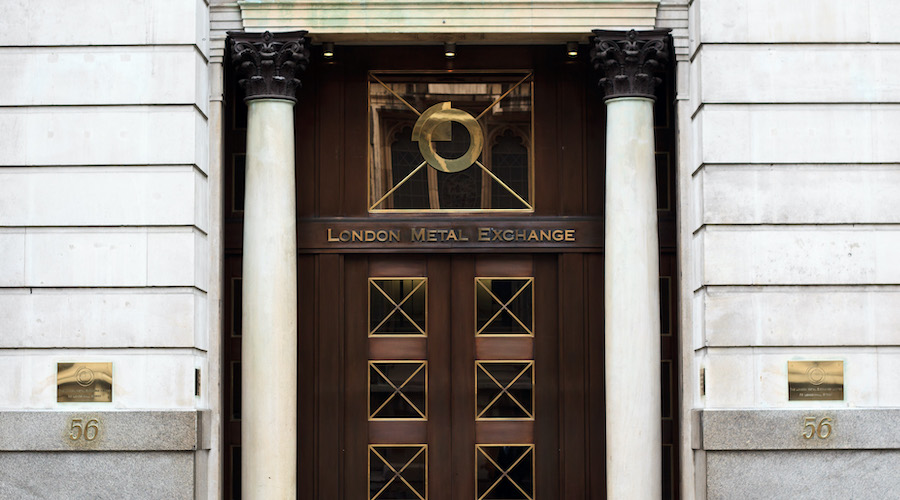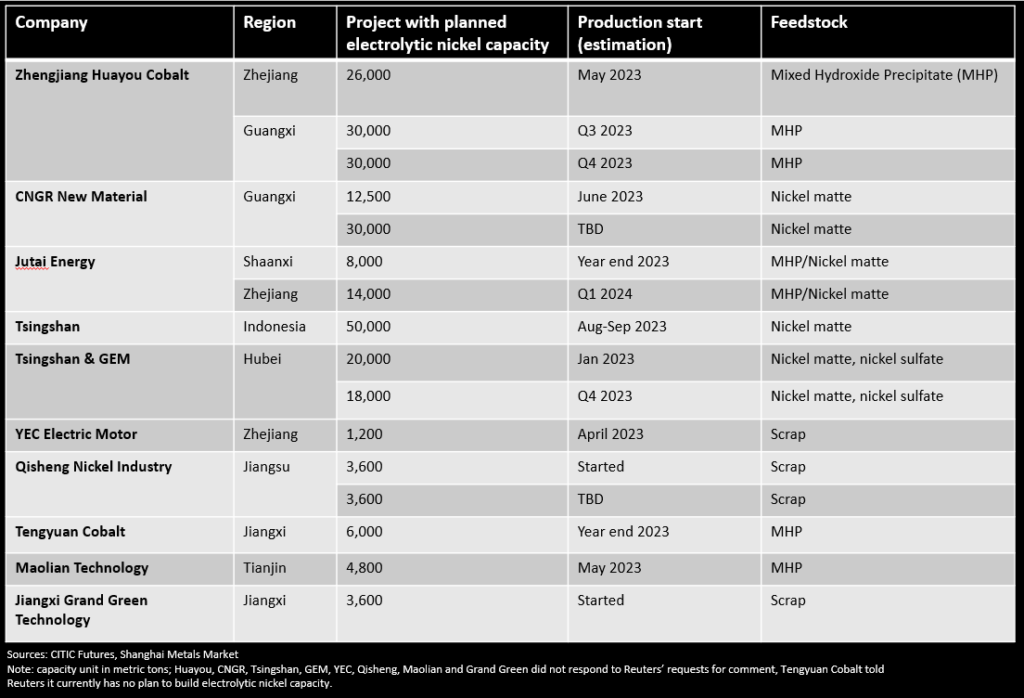
Chinese nickel producers are looking to list metal on the London Metal Exchange (LME), two China-based industry analysts said, as they seek improved access to global markets and rush to lock in profits while they boost output.
That could be a boost for the exchange, the world’s oldest and largest forum for trading metals, which is struggling to reinvigorate its nickel contract after a severe price crunch in March 2022 damaged its trading volumes and its credibility.
In March of this year, the exchange announced plans to cut waiting times and scrap fees for approving new nickel brands for delivery against its contract, aiming to boost stocks of the stainless steel material in its approved warehouses.
These changes, combined with high nickel prices on the LME compared with prices of lower-grade nickel pig iron and nickel sulfate, spurred Chinese producers to start looking at the potential for delivering into the LME system.
“The good profits, and the need to hedge with futures and to enhance their international presence, are the main reasons for the interest in an LME listing, plus the fast track provided by the exchange,” said Zhang Yuan, an analyst at state-backed CITIC Futures.

According to Zhang, Chinese companies likely to apply to the LME include Tsingshan Group, China’s largest nickel producer, and battery material makers Jutai Energy, Grand Green and Maolian Technology.
Tsingshan, Grand Green and Maolian did not respond to requests for comment, while Jutai declined to comment.
All four have plans to increase refined nickel production capacity this year or next, Zhang said.
He Siyao, an analyst at industry information provider Shanghai Metals Market (SMM), also said at least three of those companies are likely to apply for an LME listing.

More deliverable brands could mean additional stocks in LME warehouses and enhanced liquidity for its nickel contract.
Under its new listing regime, the LME, owned by Hong Kong Exchanges and Clearing, recently approved nickel from China’s Zhejiang Huayou Cobalt. Two other Chinese producers, Yantai Cash Industrial and Jinchuan Group, had already been among the LME’s brands, which now number 25 according to the exchange’s website.
Huayou and other Chinese producers have been aggressively ramping up production of refined nickel to take advantage of high prices. SMM estimates new projects based in China will add 145,300 metric tons of electrolytic nickel capacity this year, about a 60% increase over 2022.
China’s refined capacity accounted for about a quarter of the global total last year.

The LME nickel price, now around $21,650 a metric ton, also offers much more profit potential than nickel pig iron or nickel sulfate.
Profit on refined nickel production for Chinese producers was as high as 70,000 yuan ($9,740) a metric ton at the beginning of this year, before sliding to 20,000 to 30,000 yuan in June as more supply hit the market, but that still far exceeded 10,000 yuan or so on nickel pig iron and less than 10,000 yuan on nickel sulfate, SMM analyst He said.
While Chinese producers are rapidly boosting production of LME-grade Class 1 nickel, they could face a race against time to cash in, as swelling supplies of high-quality nickel are expected to narrow the price gap with lower grades.
Moves to expand nickel production have not gone unnoticed at the LME.
“Given the expected growth in nickel Class 1 production from new sources, the LME’s fast-track approach and fee waiver for new LME Nickel brands aims to encourage more stock and liquidity to the contract,” an LME spokesperson said in an email.
The exchange expects this to be done without relaxing its “metallurgical or responsible sourcing requirements”, the spokesperson said.
“We expect to see more fast-track applications come through in the coming months.”
($1 = 7.1907 Chinese yuan renminbi)
(By Siyi Liu and Dominique Patton; Editing by Pratima Desai and Edmund Klamann)
Comments